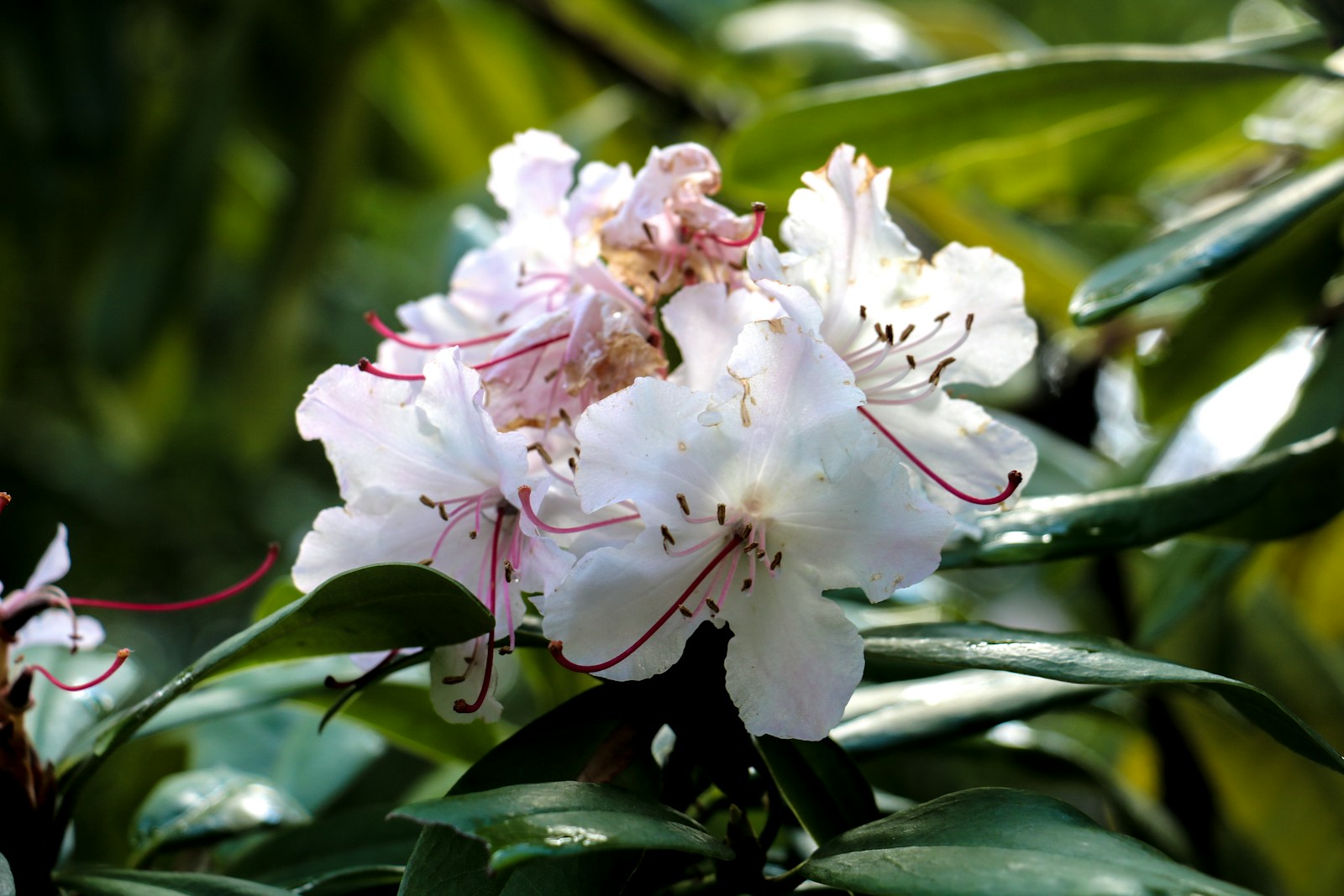Climate-Smart Gardening: Adapting to Growing Zones Across the World
Understanding Climate-Smart Gardening
Climate-smart gardening is an approach that responds to changing weather patterns and shifting growing zones caused by global climate change. It focuses on resilience, sustainability, and adaptation through smarter plant choices, efficient resource use, and regenerative practices.
This method considers temperature swings, extreme weather events, and shifting frost dates. Gardeners are learning to work with these variables rather than against them. From drought-resistant plants to heat-tolerant layouts, climate-smart gardening helps protect both crops and ecosystems while preparing for future conditions.
How Growing Zones Are Shifting Globally
As global temperatures rise, USDA hardiness zones and international equivalents are moving northward in the Northern Hemisphere and southward in the Southern Hemisphere. Regions that once hosted cool-weather crops now support warm-season varieties, while formerly hot zones face extreme heat and drought.
These shifts require gardeners to rethink their plant selections, seasonal schedules, and maintenance routines. Climate-smart gardening means recognizing your zone’s new boundaries and choosing plants suited for the evolving microclimate of your area—whether you’re in rural Canada or subtropical Australia.
Selecting Resilient Plants for Changing Conditions
Choosing the right plants is at the core of climate-smart gardening. Focus on native species and cultivars adapted to local weather extremes. Look for drought-tolerant perennials, heat-resistant vegetables, and disease-resistant hybrids that require less intervention and maintenance.
Popular choices include Mediterranean herbs, succulents, deep-rooted trees, and heirloom vegetables bred for adaptability. By selecting resilient plants, gardeners reduce water use, chemical inputs, and crop failure—making the garden more self-sustaining in the face of unpredictable climate shifts.
Soil Health and Carbon Sequestration
Soil is more than a growing medium—it’s a carbon sink and climate regulator. Healthy, organic-rich soil helps sequester carbon, store water, and buffer against temperature extremes. Climate-smart gardening prioritizes soil health through composting, cover cropping, and no-till techniques.
Adding biochar, maintaining perennial cover, and minimizing synthetic inputs boost microbial life and structure. These practices not only support stronger plant growth but also play a role in climate mitigation. Gardeners become stewards of the soil, enhancing resilience from the ground up.
Efficient Water Management in a Warming World
Water efficiency is essential in climate-smart gardening. Shifting rain patterns and droughts require smarter irrigation strategies. Techniques like drip irrigation, mulching, and rainwater harvesting reduce waste and ensure plants receive moisture at the root zone.
Planting in hydrozones—grouping species by water needs—optimizes consumption. Swales and berms help slow runoff and recharge soil. These low-tech solutions are scalable, making them ideal for backyards or urban rooftops. Water-wise gardening supports ecosystem health while protecting a critical resource in the age of climate disruption.
Implementing Climate-Smart Gardening Techniques Worldwide
From urban rooftops to rural farms, climate-smart gardening techniques are being implemented globally. In regions facing water shortages, gardeners are embracing xeriscaping—landscaping with drought-tolerant plants—to conserve water. In areas prone to flooding, rain gardens and permeable surfaces help manage stormwater and prevent erosion.
These solutions vary depending on local conditions but share the goal of building a resilient, adaptive garden that can thrive amid changing weather. Emphasizing native plants, smart water use, and waste reduction, climate-smart gardening serves as a practical and adaptable strategy across diverse ecosystems.
Permaculture: Designing for Climate Resilience
Permaculture, a holistic approach to sustainable living, is a key principle in climate-smart gardening. It mimics natural ecosystems, focusing on harmony, biodiversity, and self-sufficiency. In 2025, more gardeners are designing permaculture systems that integrate food production, water management, and energy conservation into one resilient, eco-friendly landscape.
Using techniques like mulching, swales, and composting, permaculture creates regenerative gardens that restore soil health, reduce energy consumption, and increase biodiversity. Whether it’s backyard gardening or large-scale agricultural design, permaculture’s adaptability to local climates makes it a cornerstone of climate-smart practices worldwide.
Utilizing Greenhouses for Extended Growing Seasons
Greenhouses are becoming essential tools in climate-smart gardening, especially in areas with unpredictable growing seasons. These controlled environments extend growing periods by shielding plants from harsh weather and maintaining a consistent climate. As climate patterns shift, greenhouses help mitigate the effects of extreme temperatures and erratic frost dates.
In 2025, gardeners are using greenhouses to grow a wider variety of crops year-round, from fruits and vegetables to herbs and flowers. With the addition of energy-efficient heating systems and solar-powered lighting, modern greenhouses are becoming more sustainable, aligning perfectly with climate-smart gardening trends.
Reducing Carbon Footprint through Sustainable Practices
Reducing carbon emissions is a critical part of climate-smart gardening. In addition to carbon sequestration in soil, gardeners are focusing on reducing their garden’s overall carbon footprint. By minimizing the use of synthetic fertilizers, fossil fuels, and single-use plastics, gardeners are making conscious choices to limit their environmental impact.
Using locally sourced plants, tools, and materials also reduces transportation-related emissions. In 2025, sustainability is at the forefront of garden design, with more gardeners choosing eco-friendly products, renewable energy sources, and waste reduction techniques to create a low-carbon footprint in their outdoor spaces.
Community Gardening and Collaboration for Climate Adaptation
As climate change accelerates, community gardening is gaining momentum as a powerful tool for climate adaptation. Shared garden spaces allow neighbors to grow food, exchange knowledge, and build a sense of resilience in the face of global challenges. In 2025, urban and suburban communities are coming together to create green spaces that serve both social and environmental needs.
By pooling resources, knowledge, and labor, communities are addressing issues such as food insecurity, biodiversity loss, and environmental degradation. Community gardens are essential elements of climate-smart gardening, promoting collaboration and strengthening local food systems that can withstand future climate uncertainties.
Gardens as Biodiversity Havens
Climate-smart gardening emphasizes the importance of biodiversity. Gardens are being transformed into habitats that support not only edible plants but also a wide range of wildlife. By incorporating pollinator-friendly plants, bird baths, insect hotels, and native plantings, gardeners are creating environments that boost local biodiversity.
This trend reflects a growing awareness of the role gardens play in sustaining ecosystems and protecting species at risk. As more gardeners adopt biodiversity-promoting practices, gardens become critical refuges for pollinators, insects, and other wildlife, helping preserve fragile ecosystems amidst climate change.
Water Conservation Through Smart Irrigation
Efficient water management is a cornerstone of climate-smart gardening. With rising temperatures and more frequent droughts, gardeners in 2025 are turning to smart irrigation systems that minimize water waste. These systems include drip irrigation, which delivers water directly to plant roots, and soil moisture sensors that trigger watering only when necessary.
Rainwater harvesting systems are also gaining popularity, collecting runoff from roofs to irrigate gardens during dry spells. Together, these innovations ensure that gardens remain hydrated with minimal environmental impact, aligning perfectly with sustainable gardening trends that focus on resource efficiency and conservation.
Urban Gardening: Building Resilience in Cities
As cities continue to grow and face climate-related challenges, urban gardening has become a vital tool for building resilience. In 2025, rooftop gardens, balcony planters, and urban farms are common sights, transforming underutilized spaces into green, productive areas that help regulate temperature, reduce pollution, and improve food security.
Urban gardens also promote community engagement and mental well-being. By growing food locally, urban gardeners reduce their carbon footprint while fostering stronger connections between city dwellers and nature. Climate-smart gardening practices in cities are not only adapting to current needs but also preparing urban areas for future climate challenges.
Technology-Driven Solutions for Climate-Smart Gardens
Advancements in technology are transforming how gardeners adapt to climate change. In 2025, digital platforms and smart tools are integral to climate-smart gardening. From climate modeling apps that predict weather patterns to automated irrigation systems that optimize water use, technology is making it easier for gardeners to respond to changing conditions.
Gardeners are also using AI-driven plant health monitors that detect pests or diseases early, preventing crop loss and reducing the need for chemicals. These tools not only improve efficiency but also help gardeners make data-driven decisions, further enhancing the sustainability of their practices.
The Future of Climate-Smart Gardening
The future of climate-smart gardening lies in continued innovation, collaboration, and education. As gardeners worldwide embrace new technologies and sustainable practices, the gardening community becomes more resilient to the challenges posed by climate change. In 2025, the integration of renewable energy sources, water conservation methods, and carbon-sequestering practices ensures that gardening can thrive in a changing climate.
From backyard plots to global farming initiatives, climate-smart gardening is not just a trend—it’s a movement. As more individuals and communities adopt these practices, the collective impact will help mitigate environmental damage and promote sustainability for generations to come.
Frequently Asked Questions
What is climate-smart gardening?
Climate-smart gardening is an approach that adapts to changing climate conditions by selecting resilient plants, using water-efficient techniques, and improving soil health. It includes practices such as composting, rainwater harvesting, and planting native species to create a sustainable and self-sufficient garden. By addressing the challenges of shifting growing zones and extreme weather, climate-smart gardening allows gardeners to build resilient, eco-friendly landscapes that thrive in an increasingly unpredictable climate.
How do I choose plants for climate-smart gardening?
When selecting plants for climate-smart gardening, prioritize native species and drought-resistant varieties that are suited to your region’s climate. Look for plants that require minimal water, tolerate extreme temperatures, and are naturally resistant to pests and diseases. Choose perennials over annuals to reduce soil disturbance and ensure year-round productivity. By planting resilient varieties, you can create a garden that requires less maintenance, uses fewer resources, and better adapts to changing climate conditions.
What are the benefits of water conservation in gardening?
Water conservation is a key component of climate-smart gardening. By using techniques like drip irrigation, mulching, and rainwater harvesting, gardeners can minimize water waste while ensuring plants receive the moisture they need. Water-wise gardening reduces dependency on municipal water systems, lowers utility costs, and helps conserve precious resources. These practices also protect ecosystems, preserve local water supplies, and ensure a sustainable gardening future as climate patterns change and water availability becomes more uncertain.
How can I make my garden more resilient to extreme weather?
To make your garden more resilient to extreme weather, focus on improving soil health, selecting climate-resilient plants, and implementing water-efficient strategies. Use organic mulches to retain moisture, plant windbreaks for protection against storms, and choose native species that can tolerate heat, drought, and frost. Incorporating raised beds, swales, and permeable surfaces also helps manage runoff and prevent erosion. These methods build a garden that can withstand unpredictable conditions while supporting biodiversity and sustainability in the long term.
Can climate-smart gardening help fight climate change?
Yes, climate-smart gardening can play a role in mitigating climate change. By implementing sustainable practices such as carbon sequestration in healthy soils, reducing water usage, and planting trees that absorb carbon, gardeners can contribute to reducing the overall carbon footprint. Regenerative gardening practices, such as composting and using organic materials, enhance soil health and store more carbon, helping reduce atmospheric CO2 levels. Through these small but impactful actions, gardens can support global efforts to address climate change and promote environmental resilience.
© 2025 GardeningandDecor.com. All rights reserved.



